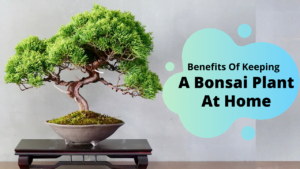Are you aware that the Adenium arabicum plant has the potential to grow as large as an elephant’s foot? And it could be as tiny as an Adenium arabicum bonsai?
Yes, you heard it correctly!
It’s a perfect outdoor ornamental tree or a bright addition to your indoor plant collection.
In this blog, we will guide you on Adenium arabicum care. Firstly, get an insight into the propagation of the Adenium arabicum plant.
How to propagate Adenium Arabicum Bonsai?
You can propagate Adenium Arabicum Bonsai in two ways: cuttings and seeds.
Like everything has two sides, these techniques have their own advantages and disadvantages.
- Propagating with cuttings will allow the plant to grow faster but with a submerged caudex.
- Propagating with seeds leads the plant to grow slower but exposed caudex.
There is a third method, grafting, sometimes operated by nurseries and is less-friendly for home gardeners.
We will cover the propagating techniques by cuttings and seeds, suitable for home gardeners like you!
Propagating by Cuttings
As we previously mentioned, Cuttings will produce a mature plant quickly, yet with a submerged caudex.
- The favorable news is that you can replant the semi-mature plant later to expose the caudex without damaging it.
- You can begin by picking clippings at least 6″ in length and spreading them out on a towel or piece of paper.
- Let them dry for 48 hours in a warm location away from direct sun rays.
- Meanwhile, you should prepare your pot. Lay the bottom of the pot with coarse gravel and fill the pot with an aggregated, well-drained potting soil mix.
Note for Adenium Arabicum Care: You can make your own potting mix. (Equal quantity of coconut coir, coarse sand or fine gravel, and potting mix.)
- Now, apply root powder to the cut end of the cuttings.
- Place the cuttings into the potting mix, then water the soil.
- Select a warm and bright area for your plant and place it there.
- Keep a check on the soil of the adenium arabicum bonsai.
Note Adenium Arabicum Care:
- Keep the soil moist, not wet.
- When the adenium arabicum desert rose plant begins to grow leaves, you can transplant them to a location that receives full sunlight.
Now, we will cover the second alternative propagating by seeds.
Propagating by Seeds
Though you can use seeds to propagate your Adenium Arabicum Bonsai, the method is more complicated and takes several years to develop a mature caudex.
- You can watch out for seed pods on your plant or get seeds online.
- Ripe seeds may appear bloated, and cover the pods with a bag to keep them from blowing away when the pods crack.
- You should remove the feathery-like ends from each seed after the pods burst.
- They have a concise shelf life, and you should plant them as soon as possible.
- Fill a shallow seed tray with a mix of coconut peat coarse sand.
- Evenly distribute the seeds and cover them with a thin layer of sand.
- Ideally, you should place the trays in a location that receives bright, indirect light and maintains an ideal temperature of 80 to 85 degrees Fahrenheit.
- Now, water the trays with a spray bottle for one or two days until the seeds have germinated (it will usually take between 3 and 7 days).
- Once the seedlings have sprouted, spray them every few days for approximately a month or until they’re big enough to transplant.
If done correctly, being a green parent isn’t that a big job. Every bonsai plant is unique in its own way and requires care that varies. Adenium Arabicum care is easy and less complex. We will instruct you in every way possible in caring for your Adenium Arabicum Bonsai.
Adenium Arabicum Care
Adenium arabicum care is straightforward, and you must handle it with care. Regular watering and lots of sunlight are two essential aspects of desert rose bushes. The arabicum plant thrives as an indoor plant in warmer temperatures.
Size and Growth
- An adenium arabicum bonsai can reach a maximum height of 16.4 feet; however, it is usually more concise.
- When grown in a house, most members of this species will attain a height of 3-4′ feet.
- Like its sister plant, Adenium obesum, this Adenium Arabicum Bonsai species has big ovate leaves that develop along the plant’s fingerlike branches.
- If the plant is grown from the seeds, the plant grows slowly. It might take years for young plants to acquire their distinctive caudex.
Flowering and Fragrance
Adenium arabicum bonsai is a unique plant in that the blooms flower before the leaves emerge and linger into the fall.
It has flared, tubular blooms that measure barely about 2″ inches across and arise in clusters.
Due to natural diversity, a single adenium arabicum desert rose plant can have a combination of flower colors, ranging from pink to carmine-red. Each flower is only open for two to three days before seedpods arise.
These pods typically grow in pairs and start pale green color. They will turn into a dark grey-brown color and inflate as they mature. The pods ultimately burst, releasing hundreds of tiny seeds around 12″ long.
Light and Temperature
Light
For Adenium arabicum care, you need to provide it with the maximum light as much as possible for them to thrive. Your adenium arabicum desert rose plant will need a lot of bright light to grow and flower well.
Place the adenium arabicum bonsai plant in a room that gets plenty of light throughout the day, such as a sunroom or a windowsill. It is essential throughout the developing stage. Your plant requires the same amount of food to grow and flourish.
Note for Adenium arabicum care:
If you have an outdoor space, find a location in your garden that gets plenty of sunlight, isn’t entirely shaded by tall plants, and provides enough protection from the hot noon sun, which can burn the adenium arabicum desert rose leaves.
Temperature
The Adenium arabicum desert rose plant does well in warmer temperatures since it tolerates and flourishes in dry environments. The ideal temperatures are between 65°F and 90°F for Adenium arabicum plants.
If your bonsai plant is exposed to temperatures below 50°F for an extended time, it will die.
Watering and Feeding
The Adenium arabicum care water requirements vary depending on the temperature and season. Watering the plant during the summer and late spring seasons, which are essentially the growing season, will aid in its development and blossoming.
This plant prefers to be kept dry during the dry seasons, so watering it twice a week would be sufficient. Before watering your adenium arabicum bonsai again, make sure the soil is completely dry. Watering should be reduced to 1-2 times per month throughout the winter and fall months when the plant is most likely to disappear.
Note for Adenium Arabicum Care:
- The soil of the adenium arabicum bonsai should be moist but not wet.
- Have a check on the soil regularly and let it dry entirely before watering it again.
- Make sure the soil is well-saturated by drenching the pot. Ensure, however, that any extra water drains from the pot.
- Adenium arabicum desert rose plants that are larger require more regular watering than smaller ones.
Feeding
Fertilize your Adenium arabicum desert rose plant ideally during the active season, growing and blooming, which is summer and spring. Once a month, apply a liquid fertilizer that has been diluted with water. Sprinkling a diluted balanced fertilizer will be sufficient. Just make sure they don’t touch the foliage and go straight to the soil. You’ll burn them if you don’t!
Note for Adenium Arabicum Care:
During the flowering stage, increase the amount of phosphorus fertilizer used. It will aid in the flowering of the adenium arabicum desert rose.
Feed the plant every 2 to 3 weeks in the spring and once a month in the summer.
Soil and Transplanting
Soil
The Adenium Arabicum Bonsai plant thrives in dry, desert-like conditions. It prefers higher temperatures and plenty of sun rays and gravelly soil, sandy soil, or perlite-rich soil that drains well. The pH of the soil of the bonsai plant should be neutral to acidic, ideally around 6.0. To keep your bonsai plant from decaying, add some gravel underneath and above the soil.
Transplanting
Spring is the best time to repot Adenium arabicum desert rose. Roots will grow more quickly at this period. As a result, the plant would quickly adapt to its new home.
Adenium arabicum desert rose is a plant that grows slowly. So you won’t have to re-pot every year. When you detect the roots starting to come out of the pot, it’s time to repot to a larger container.
Note for Adenium Arabicum Care:
- Any sort of pot will do, but it must be strong enough to contain the adenium arabicum bonsai as it grows.
- Every 2 to 3 years, repotting is required for adenium arabicum desert rose.
- To avoid excessive root growth, remove all soil from the roots and repot in fresh soil in a container no more than one size larger.
Grooming And Maintenance
Pruning your Adenium Arabicum Bonsai prevents it from growing too large and keeps it looking fresh and healthy.
Pinch out any unwanted growth during the growing season and give your plant a once-over in the fall to remove any damaged or sick limbs.
Adenium Arabicum Bonsai is an excellent plant that may be readily shaped if you start when the plant is young.
Note for Adenium arabicum care:
Early in the spring, give the plant another once-over to check that all parts of the adenium bonsai are in good working order.
Pests or Diseases
Pests
Spider mite assaults are most common on the Adenium arabicum desert rose plant. They prosper in this environment as the plant demands dryness. Mealybug infestations from nearby plants may make the plant vulnerable.
Root Rot in the Stem
Adenium arabicum bonsai plants suffer from stem root rot caused by a fungus. Rot can be yellow, dark brown, or black in color and dry or wet. When the leaves of the Adenium arabicum plant become brown and begin to fall off at the top, it indicates rotting. In this case, Adenium Arabicum care is a demand.
Diseases of the Leaves
In the Adenium arabicum varieties, leaf rot is quite precise to treat. Simply remove the injured leaves and place the adenium arabicum desert rose in a dry location to allow it to dry out. When watering the plant, avoid wetting the leaves or water the plant early in the day so that the leaves dry out rapidly.
Conclusion
The Adenium Arabicum Bonsai is a stunning flowering shrub, especially in full bloom. Adenium arabicum care only needs a little water, the right temperature, and a little tender loving care to bloom and grow.
And, whether you put it on your terrace or inside your house, the plant will be a magnificent show-stopper and a wonderful addition.
Related Articles
- Bonsai for Beginners in India [Update 2024]
- 15 Best Plants for Front Door Entrance India | Auspicious plants for front door
- 10 Study Table Decoration Ideas That Will Make You Love Learning
- Revive Your Bonsai Tree with These Proven Techniques!
- Top 15 Benefits of Bonsai Plants that will Make your Life Awesome
- Top 10 Indoor Plants for Cafes to Enhance Decor & Comfort







